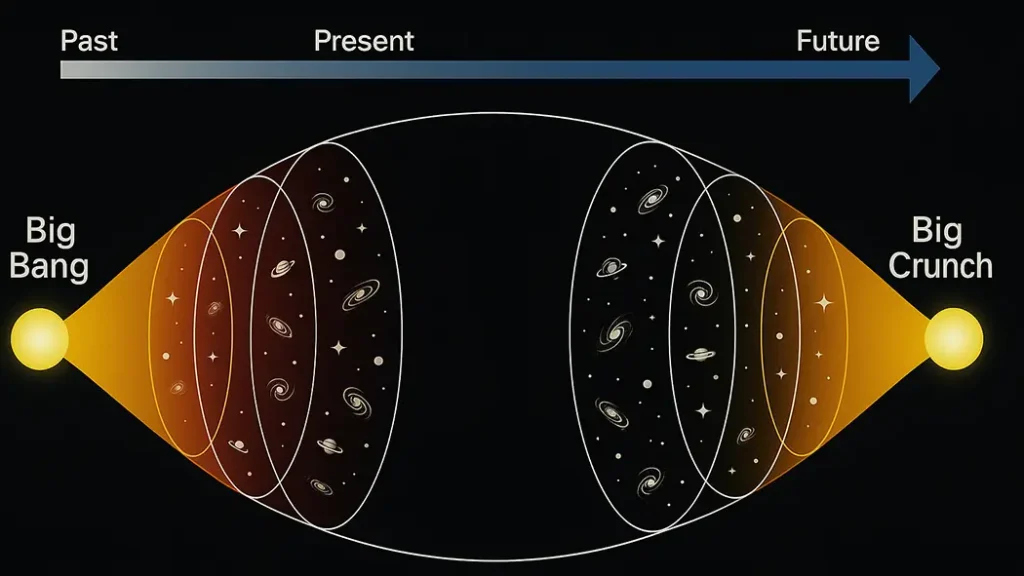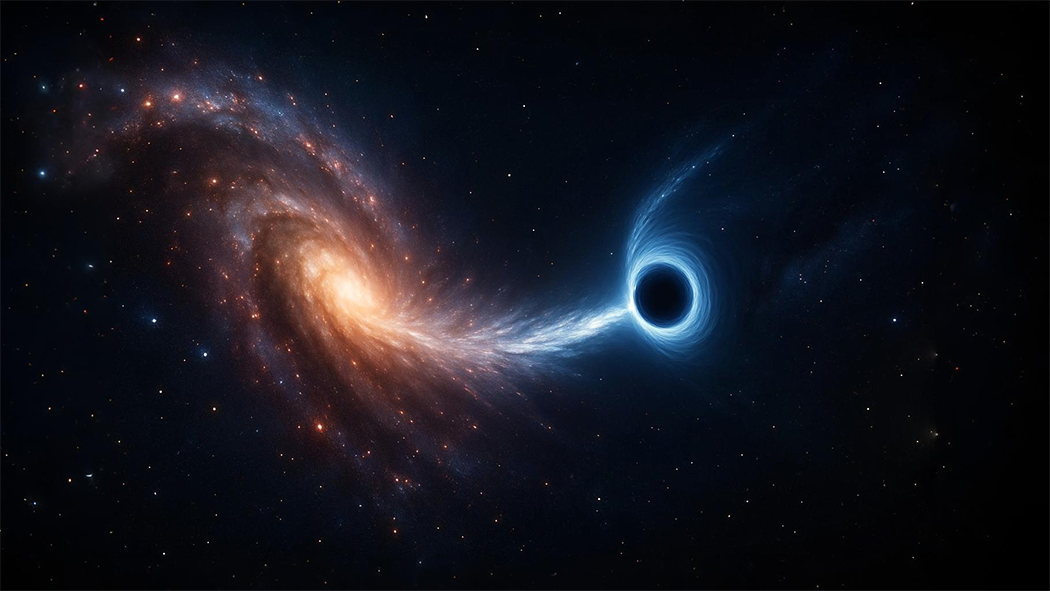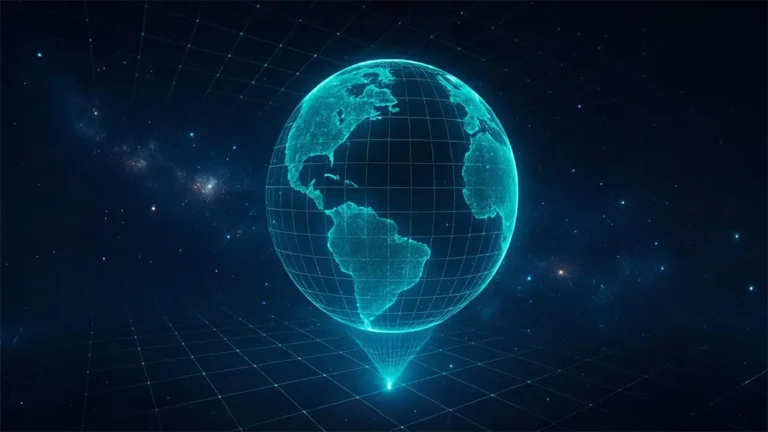When we look up at the night sky, we see stars, galaxies, and a world beyond our reach. It feels endless. But even the universe will come to an end one day. You might wonder, how will the universe end? Scientists have thought about this for a long time. They have come up with a few ideas. No one knows for sure what will happen, but we can explore the most likely possibilities.
Let’s take a simple journey to understand how the universe might meet its end.
A Quick Look Back: How Did the Universe Begin?
To understand the end, we must first think about how it all started. The universe began about 13.8 billion years ago. It started with the Big Bang. This was not an explosion like a bomb. It was the sudden expansion of space itself. Since then, the universe has been growing bigger and bigger.
At first, it was a very hot and dense place. Over time, it cooled down. Galaxies, stars, and planets formed. Life appeared much later. Now, billions of years later, the universe is still expanding. In fact, it is expanding faster and faster.
This leads to a big question: Will the universe keep expanding forever? Or will it stop one day?
What We Know So Far About the Universe’s End
Scientists have found something strange. In 1998, they discovered that the universe is not just expanding. The expansion is speeding up. This was a surprise. They thought gravity would slow everything down. But something is pushing galaxies apart. This unknown force is called dark energy.
Dark energy makes up most of the universe. But we do not know what it is. We only see what it does. Because of it, the universe is stretching faster over time. This discovery also gave us a clue about the answer to the big question: how will the universe end?
Now let’s look at the five main ideas about how the universe could end.
1. The Big Freeze (or Heat Death)
This is the most popular idea. It is also the simplest to understand.
If the universe keeps expanding forever, galaxies will keep moving away from each other. Stars will burn out one by one. There will be fewer new stars. In time, the night sky will grow dark.
Billions of years later, all stars will be gone. Only black holes and dead stars will remain. Even black holes will disappear slowly over a very long time. This process is called Hawking radiation.
At some point, there will be no heat, no light, and no life. Everything will be cold and still. This is why it is called the Big Freeze or Heat Death of the universe. It may take a googol years or more. That’s a 1 followed by 100 zeros! But it could be the final state of the universe—dark, empty, and frozen.
2. The Big Rip
This idea depends on dark energy.
What if dark energy grows stronger over time? If it does, it might tear the universe apart. This is called the Big Rip.
Here’s how it would happen:
- First, galaxies would be pulled away from each other.
- Then, stars would be torn from galaxies.
- Planets would be ripped from their stars.
- Eventually, even atoms would break apart.
Everything would be destroyed—space, time, and matter. It would be the true end of everything.
Scientists do not think the Big Rip will happen soon. If it happens, it could be many billions of years from now. But it is still a possible ending.
3. The Big Crunch
This is the opposite of the Big Freeze.
In this idea, the universe stops expanding. Then, it starts to shrink. Galaxies come closer. Everything moves inward. In the end, all matter and energy crash together.
This final collapse is called the Big Crunch. It would be like rewinding the Big Bang. The universe would return to a hot, dense point. Maybe a new Big Bang would follow. A new universe could begin. This leads to the idea of a cyclic universe—one that ends and begins over and over again.

But the Big Crunch is less likely today. Since dark energy is pushing everything apart faster and faster, the universe may never stop expanding.
4. The Big Bounce
This idea is connected to the Big Crunch.
If the universe collapses, it might not end. Instead, it could bounce back and start over. After the Big Crunch, a new Big Bang could occur, and the universe would be born again. The cycle could repeat forever. Each time, a universe forms, grows, and collapses. This idea is called the Big Bounce.
We do not have proof yet. It is hard to test. Still, some scientists are exploring this theory.

5. Vacuum Decay
This is a strange and scary idea from quantum physics.
The universe might be in a false vacuum. That means it is not fully stable. If it shifts to a true vacuum, a bubble of new energy could form. This bubble would grow at the speed of light. As it spreads, it would destroy everything—stars, atoms, even the laws of physics.
This is called vacuum decay. It would happen suddenly and silently. We wouldn’t see it coming.
Again, this is just a theory. Since it hasn’t happened in 13.8 billion years, it might never happen. But science likes to explore all options—even the weird ones.
Which End Is Most Likely for the Universe?
Right now, the Big Freeze seems most likely. This is because the universe is expanding faster and faster. If this continues, galaxies will drift so far apart that they will no longer see each other. Stars will die out. Black holes will fade. All motion will stop.
Many scientists think this could be the answer to the big question: how will the universe end?
But we still don’t know enough about dark energy. If it behaves differently, other endings are possible. The Big Rip or even the Big Crunch could still happen.
The future of the universe depends on things we do not fully understand yet.
Should We Be Worried?
No, not at all.
These events will not happen anytime soon. The death of the universe is far, far in the future. The Big Freeze may take trillions of years. The Big Rip, if it happens, is billions of years away. Even vacuum decay, if real, has not happened in 13.8 billion years. So it may never happen.
Our Sun will die in about 5 billion years. That is the first big change our planet will face. But the end of the entire universe? That’s far, far beyond our time.
Why Do These Ideas Matter?
You may wonder, why do we even care? Why think about something so far away?
The answer is simple: curiosity.
We want to understand where we came from, and where we are going. Thinking about the end of the universe helps us learn more about space, time, and matter. It helps us ask better questions. It helps us build better tools to explore space. And it reminds us that everything has a story—even the universe.
Key Takeaways
- The universe may end in five main ways: the Big Freeze, Big Rip, Big Crunch, Big Bounce, or Vacuum Decay.
- The Big Freeze is currently the most likely ending.
- These events will happen billions or trillions of years from now.
Final Thoughts
The question “How will the universe end?” may sound scary. But it comes from our curiosity to learn more about the universe.
The universe had a beginning. It will have an end. The path it takes depends on dark energy, gravity, and time. The Big Freeze, Big Rip, Big Crunch, Big Bounce, and Vacuum Decay are all ideas that try to explain how the story might close.
We may not know which ending is right. But each idea teaches us something new. As we learn more about the universe, we may find answers to these deep questions.
Until then, the universe keeps expanding. The stars keep shining. And we keep wondering.




